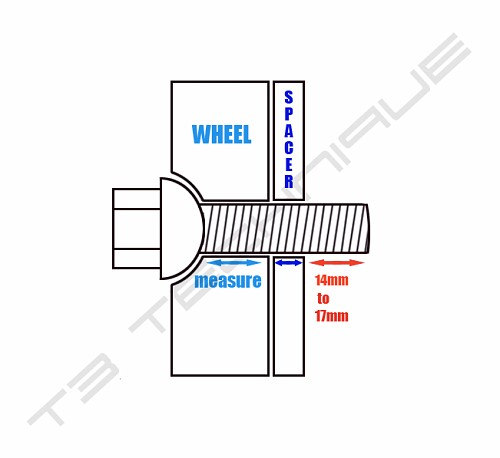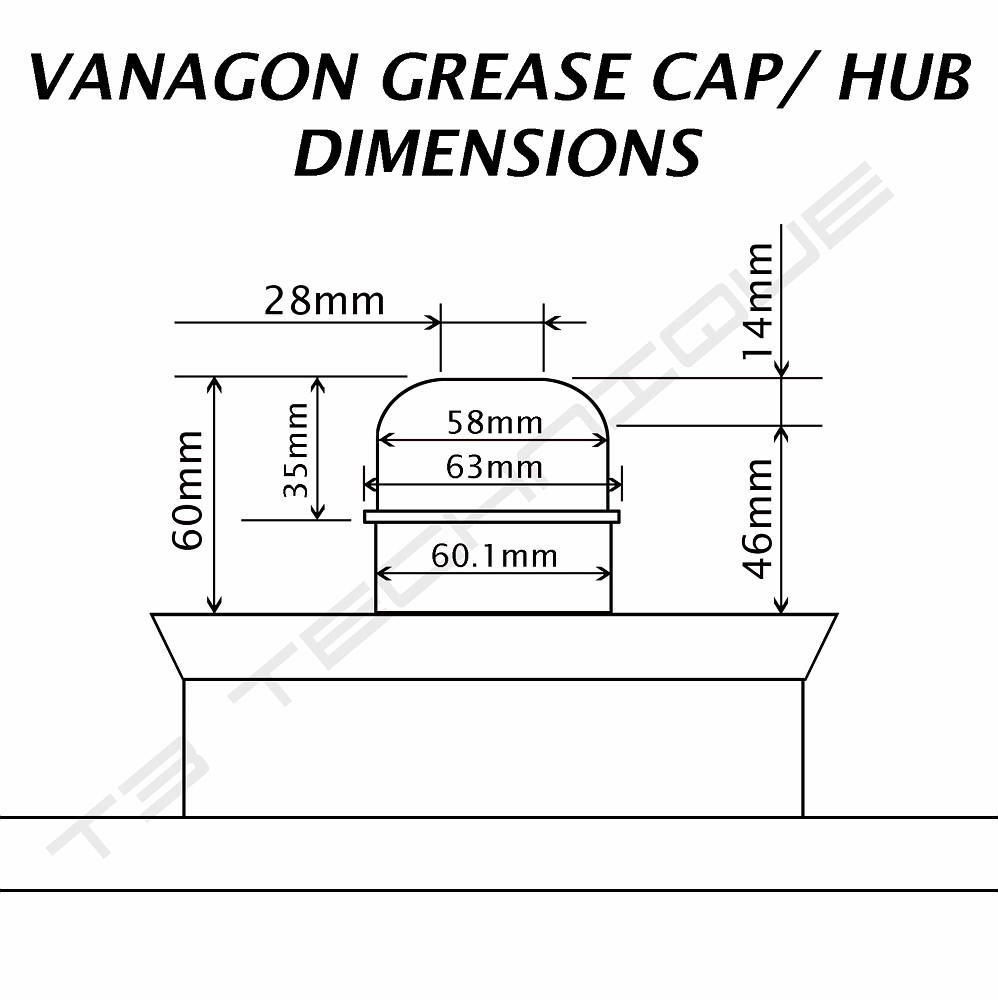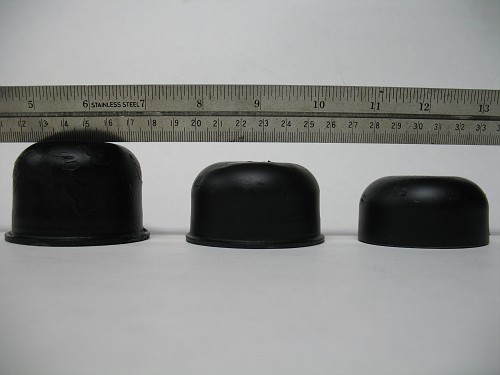In de onderstaande lijst kan je zien of de maat van wiel op je bus past. Ze komen van verschillende forums, dus alle eer aan hun!
Groen wilt zeggen dat het zonder meer gaat.
Geel wilt zeggen dat het mischien gaat, afhankelijk van het wiel zelf.
Rood wil zeggen dat je zaken moet aanpassen
Onderaan kan je kiezen tussen voorwielen en achterwielen.
Hieronder staan een aantal velgen die passen onder T3 en welke aanpassingen er eventueel aan moeten gebeuren.
AUDI
Model P.C.D. Offset C/Bore
100 (90>) 5 x 112 35...42 57.0
A4, A6, A8, V8, S2, S4, S6 5 x 112 35 57.0
Notes: Offset usable but small centre bore diameter means a need to machine the front wheels.
FORD
Model P.C.D. Offset C/Bore
Scorpio 5 x 112 35...38 63.3
Galaxy 5 x 112 42...45 57.0
Notes: Offset usable but small centre bore diameter on Galaxy means a need to machine the front wheels.
MERCEDES
Model P.C.D. Offset C/Bore
All (except below) 5 x 112 35...42 66.5
SL models 5 x 112 18...25 66.5
A Class, Vito 5 x 112 45...50 66.5
Sprinter 5 x 130 45
Vito/ML 16"x6.5J/PCD 5x112/ET47/Bore 66.5
ML -2/2002 16" 5x112 62 66.5
ML 2/2002- 17" 5x112 52 66.5
Notes: Good choice of usable offsets, centre bore adequate. Sprinter wheels require Porsche adapters. ML wheels require spacers, particularly at the front due to offset. Reports coming in that ML wheels use the 14mm ball taper standard.
PORSCHE
Model P.C.D. Offset C/Bore
911, 924, 930, 944 >86 5 x 130 25 71.5
911 Carrera 2/4, 928, 944 87>, 964, 968, 993 5 x 130 45 71.5
Notes: High offsets but with adapters many choices of style available.
SEAT
Model P.C.D. Offset C/Bore
Alhambra 5 x 112 35...38 57.0
Notes: Offset usable but small centre bore diameter means a need to machine the front wheels.
VOLKSWAGEN
Model P.C.D. Offset C/Bore
Caravelle, Passat 96>, Sharan, Transporter 5 x 112 35...40 57.0
Notes: Offset usable but small centre bore diameter means a need to machine the front wheels.
SPECIFIEKE T3 INFORMATIE
Banden
Origineel zijn de t2 en t3 standaard afgeleverd met 185r14 banden. Bij het plaatsen van nieuwe velgen/banden is het aan te raden om altijd een combinatie te kiezen die een gelijke 'afrolomtrek' heeft als het origineel. Doe je dit niet dan kom je in de knoei met je kilometerteller en de versnellingsbak.
Bij banden met een kleinere afrolomtrek zal de snelheidsmeter een hogere snelheid aangeven dan welke werkelijk wordt gereden. Ook zal de motor meer toeren moeten maken om de zelfde snelheid te halen. Bij banden met een 'grotere afrolomtrek' zal de snelheidsmeter minder aangeven dan welke werkelijk wordt gereden. Nu draait de motor juist minder toeren om dezelfde snelheid te realiseren. Trager optrekken zijn dan het gevolg, ook kost het de motor meer kracht. Natuurlijk heeft dit lagere toerental op de snelweg weer een voordeel.
De tabel hieronder geeft een aantal mogelijkheden aan tot alternatieve velg/band combinaties. Deze maten leveren geen problemen op met afwijkende snelheden op de kilometerteller en motor/bak/banden combinatie.
Velgdiameter in inches --- bandenmaat --- afrolomtrek in MM.
14" --- 185/R14 --- 1987MM.
14" --- 195/75/R14 --- 1976MM.
14" --- 205/70/R14 --- 1958MM.
15" --- 19570/R15 --- 1994MM.
15" --- 205/65/R15 --- 1974MM.
15" --- 225/60/R15 --- 1985MM.
16" --- 205/60/R16--- 1989MM.
16" --- 225/55/R16 --- 1994MM.
17" --- 215/50/R17 --- 1972MM.
17" --- 245/45/R17--- 1989MM.
17" --- 275/40/R17 --- 1987MM.
18" --- 215/45/R18 --- 1984MM.
18" --- 245/40/R18 --- 1992MM.
Duidelijk mag dus zijn dat 'hoe groter de velg hoe platter de band'!
Dit betekend minder comfort echter zullen de rijeigenschappen wel stijgen. Een plattere en bredere band heeft in het algemeen namelijk meer grip en glijd minder snel weg over de wangen van de band.
Draagvermogen of tewel loadindex
Onze busjes wegen nogal wat en voor dit gewicht zijn zeker niet alle banden en velgen geschikt!
Het maximum totaalgewicht van een gewone T3 ligt op zo’n 2200-2400 kilo. Zorg er dus voor dat bij aankoop van nieuwe banden deze 2200-2400kg. gedragen kan worden!
Doe je het zoals het hoort dan koop je officiële bestelbus banden. Deze staan ook bekend als 'catogorie C', het draagvermogen is dan 100/102 (zie loadindex)
Ga je echter lopen stoeien met grotere velgen dan val je snel buiten de officiële bestelbus banden. Zoek dan banden met een zo hoog mogelijke loadindex, let ook op de maximale last per as (zie kentekenbewijs)
Hier een tabel met de loadindex en het draagvermogen in kilo’s.
loadindex --- draagvermogen per band in kg.
82 --- 475
83 --- 487
84 --- 500
85 --- 515
86 --- 530
87 --- 545
88 --- 560
89 --- 580
90 --- 600
91 --- 615
92 --- 630
93 --- 605
94 --- 670
95 --- 690
96 --- 710
97 --- 730
98 --- 750
99 --- 775
100 --- 800
101 --- 825
102 --- 850
103 --- 875
Als je de buitendiameter van je band gaat veranderen gaat je snelheid ook afwijken.
Op deze link kan je duidelijk zien wat je afwijking gaat zijn bij 100km/h
Van the samba forum
First off, I want to thank everyone who participated in the first “Ultimate Wheel” thread. Even though that thread is filled with some really intense information, it allowed me (and others of course) to gather information that would be difficult to come by on my own. Not only that, but it also showed the benefits of wheel upgrades in terms of looks, handling and increased tire options.
Instead of adding to the VERY long winded original thread, I decided that it would best to start a new one. This thread will hopefully contain the best information from the old thread combined with some new information all rolled into one easy to follow list of wheel requirements.
For this thread, I will be trying to keep things as simple and to the point as possible. If anyone is still unclear on certain wheel terminologies, please see the following sites for some very clear explanations.
So here are the facts as I see them:
Bolt pattern:
The Vanagon bolt pattern is 5x112. This is shared with Mercedes, many Audis and many VWs. Other bolt patterns can be used on a Vanagon through the use of adapters. In order to use adapters, the offset of the wheels should be 50mm or more (at least for the front).
Offset and wheel size:
Wheel size and offset go hand in hand in most cases. The ideal offset for the front of a Vanagon is 30mm through 39mm. A little more or less is sometimes okay, but it really is best to stay as close to the ideal as possible. The following is a list of wheel sizes and their recommended offsets in relation to the FRONT of a 2wd Vanagon (Syncro front applications can usually get away with slightly more offset):
[list]15x6 - ET30 through ET35
15x6.5 - ET30 through ET35
15x7 – ET30 through ET32
15x7.5 – ET25 (not recommended)
15x8 – ET18 (not recommended at all – wheel will be outside the wheel opening)
16x6 – ET30 through ET35
16x7 – ET30 through ET35
16x7.5 – ET28 through ET30 (Tire width is critical in this application. The narrower the better)
16x8 – ET17 (not recommended at all – wheel will be outside the wheel opening)
17x7 – ET30 through ET42
17x7.5 – ET30 through ET36
17x8 – ET30
17x8.5 – ET23 (not recommended)
*Note* - For wheels 15x7 and wider as well as 16x7.5 and wider, tire selection is super critical as it is the tire that will make contact with the upper control arm before the wheel ever hits the upright/spindle. For the above recommended offsets, 205's should be just fine, 215's should be okay at the lower offsets but really check them for the higher offsets and 225's will definatley need to be inspected closely to ensure that they don't rub on the upper control arm.
Below are a series of illustrations showing how the Vanagon suffers from a height versus width issue when it comes to fitting wheels onto the front. The illustrations, although slightly exaggerated, clearly show how simply changing the diameter of the wheel can have a profound impact on the fitment.




***Please see the notes at the end for more information***
Centerbore:
Mercedes wheels have a 66.56mm centerbore. Audi/VW wheels have a 57.1mm centerbore. Due the large diameter of the Vanagon’s front grease cap, a centerbore of at least 64mm is required. Obviously the Mercedes wheels will fit just fine but the Audi/VW wheels must have their centerbores enlarged in order to fit. I recommend that the Audi/VW centerbore be opened up to the same inner diameter of the Mercedes wheels, 66.56mm. The reason is that this gives good clearance for the grease cap as well as allows the owner of the wheels to install a 66.56 to 57.1 hubcentric ring adapter should they ever choose to sell or use these wheels on an Audi/VW again. It’s nice to have options and if you are having the centerbores opened up anyway…..
Lug nuts, lug bolts, wheel studs and wheel thickness:
Mercedes wheels that originally were designed for use with 12mm lug bolts must be drilled to accommodate 14mm wheel hardware. Although a 9/16” drill bit will work for this, I recommend a 37/64” drill bit for a little more clearance around the lugs. Make sure you debur the hole after drilling.
12mm lugged Mercedes wheels and Audi/VW wheels use a small ball seat lug. Original Vanagon lugs are too big to seat properly. See the following picture for the difference.

How do you know if your wheels require the small ball seat lugs or if the stock Vanagon lugs will work? Simple! If you had to drill out the lug holes of your factory Mercedes wheels (not aftermarket) for 14mm wheel hardware, you need the small ball seat lugs. If your wheels are factory Audi/VW, you need the small ball seat lugs.
Mercedes wheels that originally came with 14mm lug bolts can be used in conjunction with the stock Vanagon steel wheel lug nuts (ball seat).
Each wheel measures slightly different from the base of the lug seat to the wheel mounting face. See the following illustration for an explanation. The area in question is depicted as the lighter blue arrow. This measurement must be known in order to make an accurate assessment as to the necessary length for wheel studs and lug bolts.

Measuring for rear wheel studs:

2wd and Syncro Vanagon rear wheel studs are 34.4mm long overall. 23.4mm protrudes from the hub/brake drum.
Syncro front wheel studs are approximately 45mm long overall. Approximately 23.4mm protrudes from the hub/brake rotor.
(I say approximately because I have not measured this myself. I have had to rely on others for this information)
Lug torque will remain the same no matter what wheels you are running. Lugs should be torqued to 123 lb-ft.
Centercaps:
Due to the long hub/grease cap of the Vanagon, fitting centercaps can be a challenge. If you are overly concerned about having centercaps, try to choose a wheel that has the flattest face possible. The more that the wheel is “dished” in toward the center, the less likely it is that you will be able to fit a centercap. Even with a flat faced wheel, the mounting style of the centercap may still prevent it’s use.
See the following illustration to help you determine if a particular wheel’s centercap might fit.

Keep in mind that there are two sizes of grease caps that came on Vanagons. By far the most common is 35mm in height. The taller version is 43mm in height. It is possible to shorten the 35mm grease cap by approx. 5mm if needed for centercap clearance. The 43mm grease cap could be shortened by 13mm.
The following photo shows the tallest grease cap on the left, the most common cap in the center and the 5mm shortened version on the right.

Note for those either running or contemplating Van-Café (SA) big brakes:
The SA big brake kit uses a hub that has different dimensions than the original Vanagon brake rotor/hub. They also use press in studs like the rear instead of lug bolts. Here are some critical specs from the SA big brake that one should be aware of when using them in conjunction with various wheels.
The SA hub tapers from approx. 60.1mm at the grease cap to 65.86mm at the mounting face of the brake rotor. This information is critical when it comes to enlarging the centerbores of Audi/VW wheels as well as the use of hubcentric spacers. I still suggest that Audi/VW wheels have their centerbores opened up to 66.56mm.
The SA hub also positions the track width (measured from mounting face to mounting face) 5mm narrower than the stock brake set-up. This means that a given wheel will mount 2.5mm (2.5mm per side) further inboard when using the SA brake kit as compared to the stock Vanagon brakes. If you’re current wheel or wheel/spacer combination is really close to either the upright, upper control arm or both with the stock Vanagon brakes, it is possible that you could run into clearance issues when switching to the SA brakes.
The SA hub uses press-in studs that are 51mm in overall length. 29.7mm protrude from the hub once the rotor is installed. This information is critical when it comes to knowing whether or not a particular wheel or wheel/spacer combination will leave with enough threads to properly install the lug nuts. The knurl (spline) diameter of the SA studs is 15.1mm.
Porsche spec studs can be used as a replacement, but a tack weld at each stud head may be necessary to keep the stud from spinning in the bore under extreme conditions.
Additional notes:
Note: When installing spacers, adapters or even just changing wheels, it is usually necessary to remove the two 11mm headed bolts from the rear drums. These bolts serve no practical purpose and it is perfectly fine to discard them.
Note: Keep in mind that the higher the offset, the less clearance you will have to critical suspension components. If you plan on running a wider than normal tire, check your clearances very carefully.
Note: Spacers can only be used to correct a wheel’s offset if it is too large. Spacers will not help you if the wheel’s offset is too small. Only machining of the wheels can help you there.
Note: The offset does not need to be the same front and rear on a Vanagon. Sometimes it is actually better to have different offsets front and rear. The rear suspension is much less dynamic than the front and therefore is not nearly as sensitive to offset changes.
Note: If you follow the same fitting guidelines for the front and rear of your Vanagon, you can be assured that the rear will fit properly without any sliding door clearance issues. For example, 16x7 with an effective offset of 30mm (after any spacers) will work both front and rear with no problems.
Note: The offset of the wheels can affect the tire clearance greatly. More offset at the front wheels will give you more clearance to the body but less clearance to the front suspension components. Body to tire clearance is usually not a problem on the rear of a Vanagon but more offset will decrease the clearance between the tire and rear control arm as will a larger diameter. Please keep this in mind when comparing wheel and tire combinations that others have used.
Note: Syncros and 2wd Vanagons have very different front suspension parameters. Syncros can handle a much wider variation of front wheel widths and offsets. However, if you follow the 2wd front wheel guidelines, you can be assured that the wheels will fit your Syncro as well.
KWell, I think that about covers it. If I forgot something, please let me know and I will add it in.
